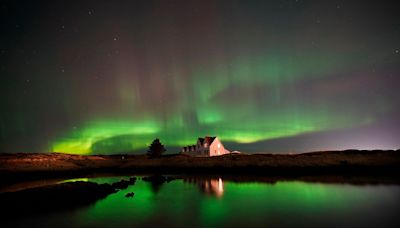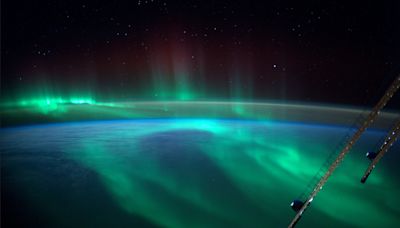Search results
This is a short-term forecast of the location and intensity of the aurora. This product is based on the OVATION model and provides a 30 to 90 minute forecast of the location and intensity of the aurora. The forecast lead time is the time it takes for the solar wind to travel from the L1 observation point to Earth.
An aurora (pl. aurorae or auroras), also commonly known as the northern lights (aurora borealis) or southern lights (aurora australis), is a natural light display in Earth's sky, predominantly seen in high-latitude regions (around the Arctic and Antarctic). Auroras display dynamic patterns of brilliant lights that appear as curtains, rays ...
Feb 9, 2024 · Aurora Borealis. Northern lights (aurora borealis): What they are & how to see them. References. By Stefanie Waldek, Daisy Dobrijevic. last updated 9 February 2024. The northern lights are...
Current Space Weather Conditions. on NOAA Scales. Aurora. The Aurora Borealis (Northern Lights) and Aurora Australis (Southern Lights) are the result of electrons colliding with the upper reaches of Earth’s atmosphere. (Protons cause faint and diffuse aurora, usually not easily visible to the human eye.)
Jun 10, 2021 · Nothing can ruin our joy in the aurora borealis, or northern lights, those ribbons of blue, green and violet light that cascade from the sky. Not even knowing for sure what causes them....
Oct 19, 2023 · ENCYCLOPEDIC ENTRY. Aurora. An aurora is a natural light display that shimmers in the sky. Auroras are only visible at night, and usually only appear in lower polar regions. Grades. 9 - 12+. Subjects. Earth Science, Astronomy, Geography, Physical Geography, Physics. Photograph. Aurora Borealis.
Auroras—Heavenly Lights. Read a National Geographic magazine article about auroras and get information, facts, and more about magnetic storms. By Kenny Taylor.



